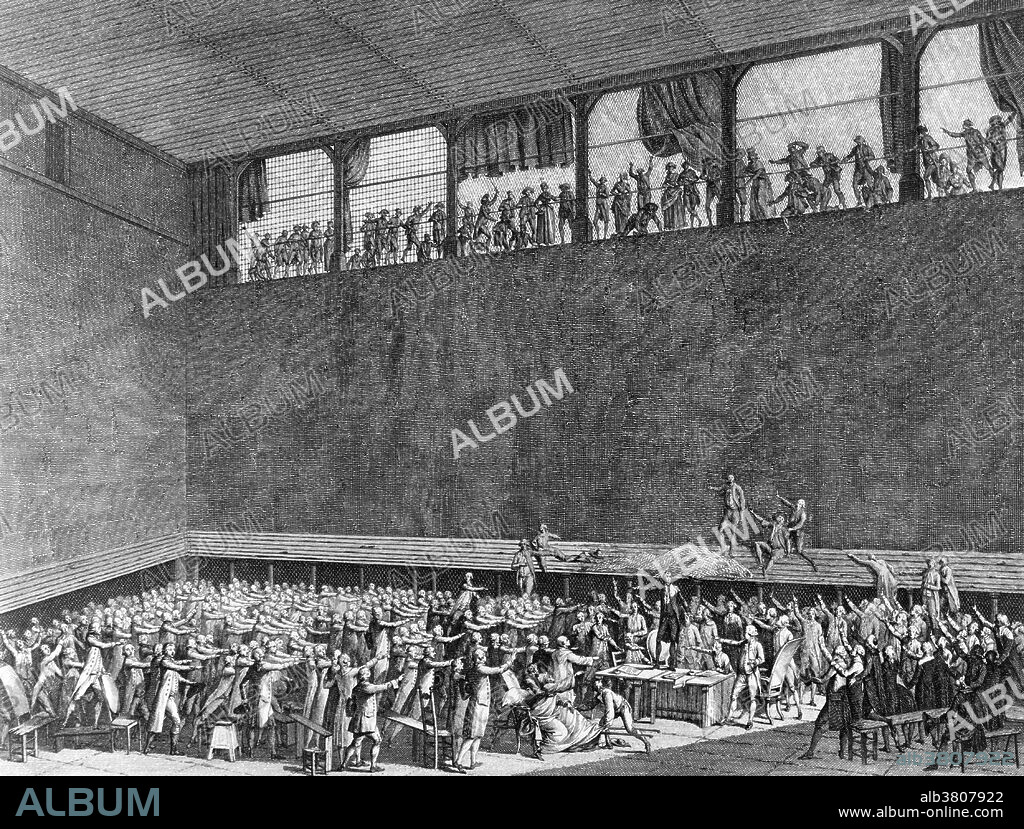alb3807922
French Revolution, Tennis Court Oath, 1789

|
Add to another lightbox |
|
Add to another lightbox |



Title:
French Revolution, Tennis Court Oath, 1789
Caption:
Entitled: "Serment du jeu de paume, Ã Versailles." Shows a large group of people taking an oath at the tennis court, Versailles, during the French Revolution. The Tennis Court Oath was a pivotal event during the first days of the French Revolution. The Oath was a pledge signed by 576 of the 577 members from the Third Estate who were locked out of a meeting of the Estates-General on June 20, 1789. The only person who did not sign was Joseph Martin-Dauch from Castelnaudary, who would not execute decisions not decided by the king. They made a makeshift conference room inside a tennis court, located in the Saint-Louis district of the city of Versailles, near the Palace of Versailles. They took a solemn collective oath "not to separate, and to reassemble wherever circumstances require, until the constitution of the kingdom is established". The oath was both a revolutionary act, and an assertion that political authority derived from the people and their representatives rather than from the monarch himself. Their solidarity forced Louis XVI to order the clergy and the nobility to join with the Third Estate in the National Assembly in order to give the illusion that he controlled the National Assembly. Etching by Pierre Gabriel Berthault, 1804.
Credit:
Album / LOC/Science Source
Releases:
Model: No - Property: No
Rights questions?
Rights questions?
Image size:
4500 x 3410 px | 43.9 MB
Print size:
38.1 x 28.9 cm | 15.0 x 11.4 in (300 dpi)
Keywords:
1780S • 1789 • 18TH CENTURY • 18TH CENTURY, THE • 18TH • ART • ARTFORM: ICON • ARTWORK • BW • CELEBRITY • DRAWING • ESTATES-GENERAL • ETCHING • EUROPE • EUROPEA • EUROPEAN • EVENT • FAMOUS • FRANCE • FRENCH REVOLUTION (1789-99) • FRENCH REVOLUTION • FRENCH REVOLUTION,1789 • FRENCH • GOVERNMENT • HISTORIC • HISTORICAL • HISTORY • ICON • ICONIC • ILLUSTRATION • IMPORTANT • JUNE 20 • JUNE 20TH • MEN • NOTABLE • POLITICAL • POLITICS • REVOLUTION 1789, FRENCH • REVOLUTION • REVOLUTIONARIES • REVOLUTIONARY ACT • SYMBOL • SYMBOLIC • TENNIS COURT OATH • THIRD ESTATE • VERSAILLES • WELL-KNOWN
 Pinterest
Pinterest Twitter
Twitter Facebook
Facebook Copy link
Copy link Email
Email

